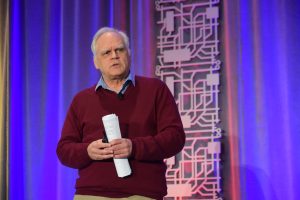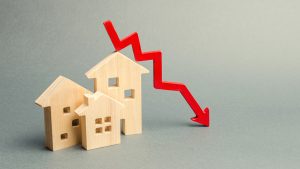A home built in Prince Edward Island a half-century ago that challenged the establishment through design innovation lived a short life, but its guiding philosophies could still teach today’s architectural world a thing or two about sustainability
Complete with a solar panel roof and a high-performing building envelope, the Ark was a bio-shelter that offered its occupants a new way of living. It featured an integrated greenhouse and fish tanks to serve as food sources for inhabitants as well as the nearby community.
"In terms of the integration of food systems into the fabric of the architecture and the energy system of the building, it was way ahead of its time," says Steven Mannell, director of the College of Sustainability at Dalhousie University in Halifax, N.S.
Mannell is curator of a new exhibit on the Ark which was home to four people for about 18 months in the mid-1970s before it went on to other uses. It was demolished in the late 1990s.
Running until next April at the Confederation Centre Art Gallery in Charlottetown, the exhibit includes models, drawings, documents, photos and even a full-scale fragment reproduction of the house, he says.
"We want to show the visual and spatial ideas of the Ark but also the biological ideas and how the biology of the New Alchemists and the architecture of Solsearch (Architects) came together in the project," says Mannell.
The Ark was the brainchild of the New Alchemy Institute based in Cape Cod, Mass. and was designed by Solsearch Architects.
It featured a greenhouse, the breadth of its south side below a band of solar panels that heated the house. The greenhouse was divided into two sections: the smaller section connected to the home’s kitchen allowing residents to grow fresh vegetables and tomatoes; the large section was to serve the greater community.
The home included fish tanks where Tilapia — a relatively unknown fish at the time — was raised for food. The tanks’ nutrient-rich water was used to fertilize greenhouse soil while plant cuttings from the greenhouse helped feed the fish.
Additionally, the thermal mass of the large tanks helped to heat and cool the building, Mannell says.
While conventional construction methods were employed, the walls were framed in two-by-six joists to allow for additional insulation, says Mannell. Roof insulation met ‘R’ values similar to today’s standards.
Novel for the time was the building envelope — "a lapped and sealed poly-vapour barrier" in tandem with high-performance windows.
The greenhouse, conventionally framed with two-by-12 Douglas Fir, had innovative cellular acrylic panels which offered cutting edge window film technology, says Mannell.
"The descendants of that material (Low E glass) are standard greenhouse glazing now," he adds.
The house was equipped with modern kitchen appliances partly to prove that solar energy could provide a lifestyle that "was at least as rich as a conventional lifestyle powered by fossil fuel," says Mannell.
The Ark cost about $150,000 to construct. Additional monies were required for equipment, research and design. The federal government’s department of urban affairs provided a grant of about $250,000 and another $100,000 came from the environment department for the solar system design and for a hydraulic turbine to generate electricity.
The property at Spry Point was provided by the Prince Edward Island government.
The Ark was planned to be one of many by the New Alchemy Institute but the building type never caught on.
"They thought these (homes) were going to be what the world needed to save it from itself," says Mannell.
While New Alchemy might have had the spirit of the 1970s counterculture, staff there weren’t hippies looking for a place to dropout, he adds.
"They had PhDs… they were research scientists. But they shared with the hippie counterculture a desire to do it themselves… to challenge the status quo," Mannell says. "The idea was to let you live some kind of enriched and maybe more authentic or localized life."
He notes that former Prime Minister Pierre Elliott Trudeau was at the home’s opening where he coined the term "Living Lightly on the Earth."
Mannell adds if the Ark’s design philosophies had caught on, the world might be a different place today.
"We still haven’t got to the stage where we can imagine a sustainable future might be a better future. We just keep talking about what we have to give up," he says.







Recent Comments
comments for this post are closed